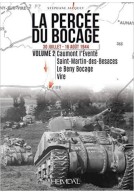Proposed Airborne Assaults during Operation Overlord (Hardback)
Cancelled Allied Plans in Normandy and Brittany

Pages: 296
Illustrations: 16 mono illustrations
ISBN: 9781399037433
Published: 2nd May 2024
(click here for international delivery rates)
Order within the next 8 hours, 58 minutes to get your order processed the next working day!
Need a currency converter? Check XE.com for live rates
| Other formats available - Buy the Hardback and get the eBook for £1.99! | Price |
|---|---|
| Proposed Airborne Assaults during… eBook (7.8 MB) Add to Basket | £6.99 |
The airborne landings on D-Day played a major part in the success of the largest amphibious operation ever mounted. Yet just over three months later Operation Market Garden, the largest airborne operation ever attempted, failed to take all its objectives. It is notable, however, that in the film A Bridge Too Far Dirk Bogarde’s Lieutenant General ‘Boy’ Browning refers to a large number of cancelled operations since D-Day. What were these operations? Why do we know so little about them? And what can they tell us about Allied airborne planning, and the way that the allies fought, in 1944?
As James Daly reveals, plans were considered or drawn-up for a number of ambitious airborne assaults that could have formed part of the Allies’ efforts to break out of the beachheads. Of these, three, operations Wastage, Tuxedo and Wild Oats, might well have been part of the fighting in Normandy itself. Operation Wild Oats, for example, was to see the 1st Airborne Division help capture Caen in conjunction with the British I Corps and XXX Corps. Three others, operations Beneficiary, Hands Up and Swordhilt, were to be combined airborne and amphibious descents to seize the vitally important ports of St Malo and Brest, as well as the Quiberon Bay area in southern Brittany.
Airborne planning was frenetic and wide ranging during this period. One operation would have seen gliders landing on a beach; another would have seen the airborne troops taking off without maps. Some of them were months in the planning; others were merely an idea that lasted for a matter of days. Far from being standalone airborne operations, all of them were part of a wider strategy and several were major combined operations, effectively small-scale D-Days, complete with seaborne landings.
For the first time, this book looks at each of these operations in detail. Using new research and drawing on original planning documents, including maps of planned drop zones and operational areas, most of which have never been published before, James Daly explores a little-known aspect of the Allies’ landings in France in the summer of 1944.
“This well-researched book provides an inside look at the complex planning required to mount an airborne operation. Airborne specialists should find it a useful read.”
The Journal of the Air Force Historical Foundation - Spring 2025
“Daly’s book is an excellent piece of scholarship, and it is crafted to the standard that readers expect… Thoroughly engrossing and a great addition to the library of anyone interested in the history of airborne forces.”
ARGunners.com
Read the full review here
As featured by
The History Shelf BookTube channel
This first book brings fascinating new information to light for both readers & historians. I now look forward to his next.
HistoryBookChat
Read the Full Review Here
Podcast episode available to listen to here
"We're Not Lost, Private" Podcast
About James Daly
JAMES DALY is a historian and museum curator. James has previously published on the experiences of Portsmouth people in the First and Second world wars. He was inspired to write this series of books on airborne operations by the experiences of his grandfather, who fought at Arnhem with the 11th Battalion Parachute Regiment. Part of the curatorial team that developed the new displays at the D-Day Story in Portsmouth, James has also lectured to a wide range of audiences and appeared on podcasts such as We Have Ways of Making you Talk with Al Murray and James Holland. An Associate Fellow of the Royal Historical Society and an Associate of the Museums Association, James lives and works in Portsmouth, United Kingdom.
















